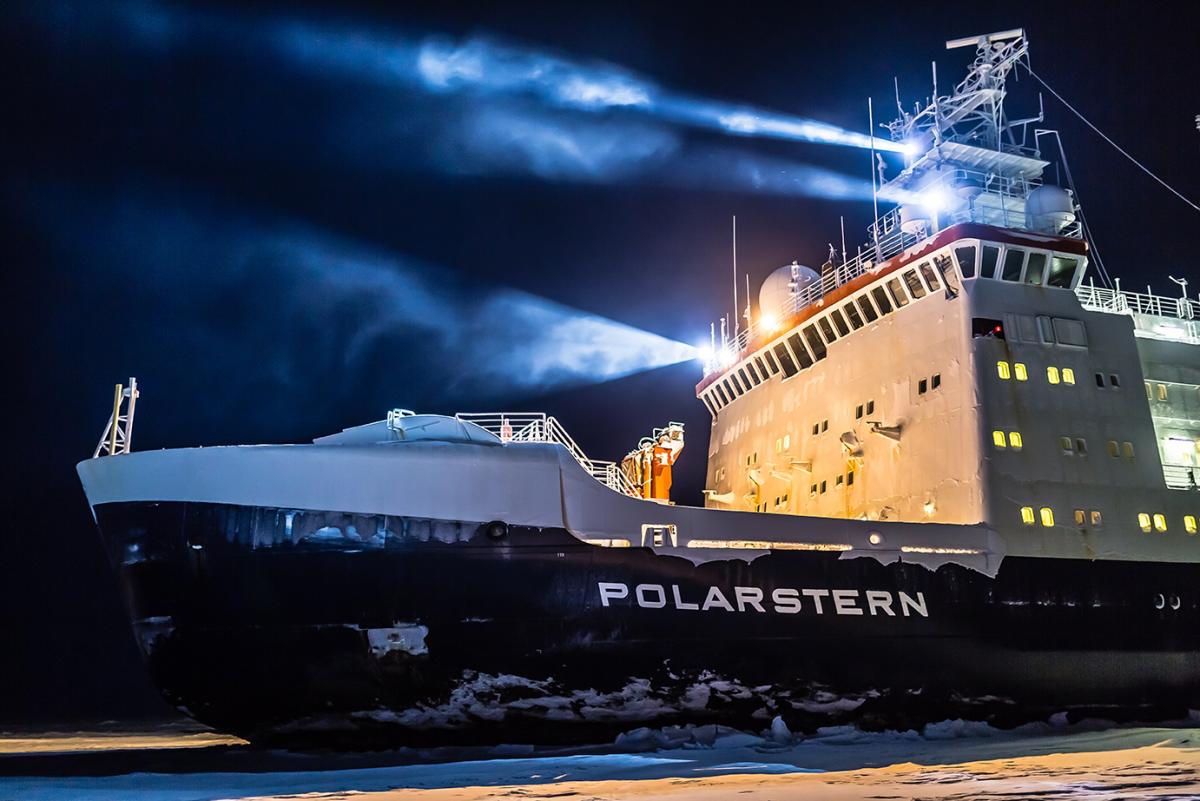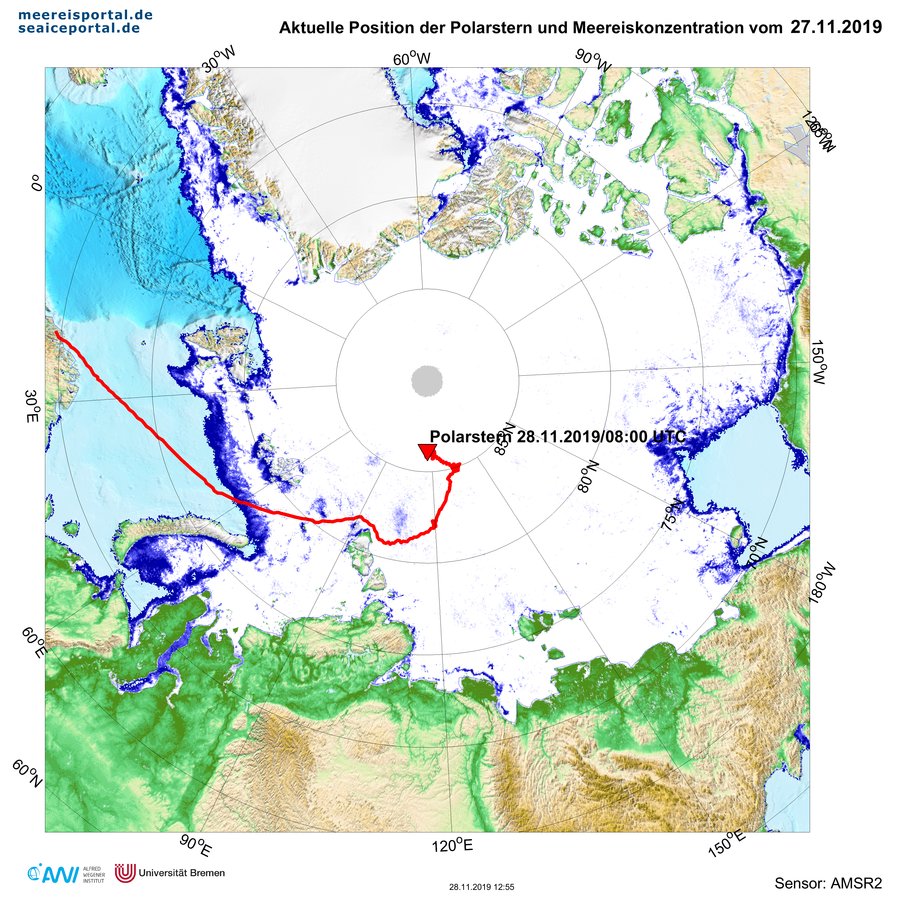The light from the MOSAiC ship Polarstern is visible from space. The NOAA satellite NOAA-20 carries the VIIRS instrument. In addition to 16 M-Band channels and 5 I-Band channels the VIIRS instrument has the Day Night Band (DNB). The DNB is very sensitive to visible light. It actually has 3 modes: one for solar light, one for twilight conscious and one for night. That way the DNB can detect reflected moonlight at night, but also artificial light sources such as the light from Polarstern or other light features as the Aurora.
The image above is a combination of the DNB channel and the M15 band (which is an infrared channel) to give it colours. A SYNOP from the ship is also visible if the image is viewed in full size. A SYNOP is a standard way to measure meteorological parameters. The stream of SYNOP observations is collected through the WMO Global Telecommunication System of the World Meteorological Organization (WMO GTS) in near real time, and is used to improve weather forecasts in the high Arctic.

The Polarstern needs to light up its surroundings to allow work during polar night and protect the researchers working on the ice from polar bears. The ships position as of November 28 2019 can be seen in the image below. Follow this link to find the updated position: where-is-Polarstern.



